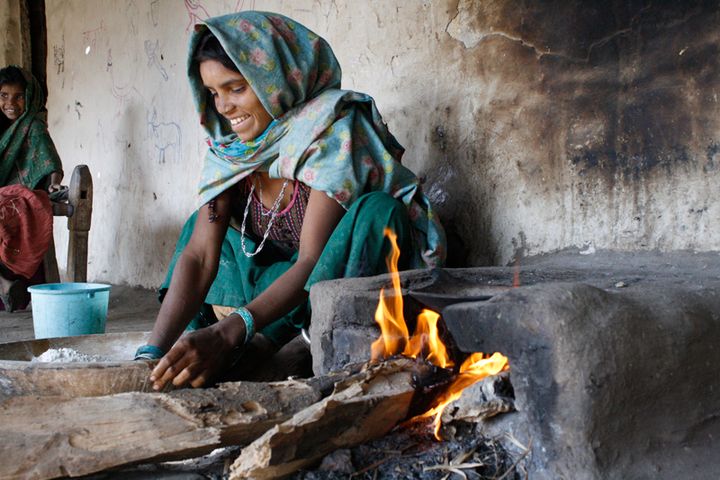Lights On Briefing: Import duties rock solar markets, Pakistan PM at the Winter Olympics and more
What you need to know to start the week

Happy Monday and welcome to today’s edition of Lights On, with this week’s key stories on energy and climate change in South Asia. For comments and suggestions, reply to this email, and if you are not a subscriber, you can sign up below:
India
‘Gargantuan task’ in way of energy transition
A parliamentary committee has poured cold water on India’s latest renewable targets of 500 GW of installed capacity by 2030. A report presented to Parliament last week found that bridging the gap between the investments on the table and the finance needed to achieve the clean energy goal will be a ‘gargantuan task’. To get the energy system ready for the shift and help pay for the needed improvements to transmission and storage infrastructure, the committee said, India needs between $20 and $26.8 billion. Currently, only $10 billion is available.
Import duties start to bite local markets
Foreign investors are getting cold feet as India’s import duties on solar modules (40 percent) and cells (25 percent) kick in, driving prices up. Despite the aggressive incentives for solar manufacturing introduced in the latest Union Budget, the Norwegian firm Scatec decided to shelve a 900 MW solar project it was developing in the state of Rajasthan in partnership with India’s Acme Solar, citing lack of domestic supply and the upcoming import duties due to come into effect on 1 April.
The decision adds weight to experts’ concerns that regardless of the incentives on the table, India is not ready to ramp up manufacturing at the speed and standard needed to support its booming solar industry.
Coal diplomacy
The giant state-owned Coal India is looking to export 3 percent of its output to neighbouring countries, after supplying only Indian consumers for decades, according to a Reuters exclusive. The change of policy, which has been confirmed on the record but may be delayed due to India’s current fuel shortages, will target Bangladesh, Nepal and Bhutan in an effort to strengthen regional ties and push back against China’s influence in South Asia.
Grid upgrades
India’s main power transmission operator, the Power Grid Corporation, has approved two major grid upgrades worth a total $90 million, in the Chenab valley of the northern Jammu and Kashmir state, and in the state of Rajasthan. Experts agree that getting the grid ready for a deep energy transition will be one of the key challenges of 2022, not just in India but globally, for which investments will have to grow by 70 percent per year in the next decade. In difficult terrains such as Jammu and Kashmir’s, the development of a functional transmission infrastructure has held back the government’s grand plans for energy development.
Pakistan
Key visit to the Winter Olympics
Prime Minister Imran Khan has travelled to Beijing for the opening of the Games hosted by China, hoping for much more than figure skating entertainment. Ahead of the meeting with President Xi Jinping, media in India and beyond speculated that Pakistan may be seeking billions in new loans, further deepening its dependency on China. A joint statement after the visit reaffirmed the focus on the China-Pakistan Economic Corridor (CPEC), a network of infrastructure developments which includes numerous major energy projects.
"Both sides acknowledged the major contribution of CPEC projects, particularly in the areas of energy and transport infrastructure, in strengthening Pakistan’s key role in regional connectivity while modernizing its economic base,"
Foreign gas to the rescue
As the fuel crisis rages on, Pakistan’s parliament is considering expanding liquefied natural gas (LNG) imports to meet the country’s growing demand, which becomes particularly acute in the winter period. Domestic gas production has been dwindling for the past two years, leading the government to look abroad to bridge the fuel gap. However, imported LNG is more expensive than locally produced fuel, potentially leading to a spike in energy prices which would hurt Pakistan’s struggling economy.
Nepal
The contentious half a billion dollars
A $500 million grant from the US to modernise and decarbonise Nepal’s power system hangs in the balance. Approved in 2017, the Millennium Challenge Corporation-Nepal Compact has never been endorsed by the South Asian country’s parliament, amid concerns that the grant would come with political strings attached, affecting Nepal’s sovereignty and diplomatic neutrality. As America now inches closer to cancelling the deal, authorities in Nepal appear confident they will get the deal ratified by the end of the month.
EV revolution in the making
A golden age of clean mobility may be on the cards for Nepal, where electric car imports have soared to 1103 units in the past six months, up from just 51 in the same period last year. This is largely attributed to the government slashing import duties on battery powered vehicles from 40 to 10 percent, in an effort to mainstream electric mobility and tackle the air pollution that regularly engulfs the capital Kathmandu. Now car dealers say that while demand is growing in the country, India’s car makers, from which Nepal sources the bulk of its imports, are struggling to meet it.
Bhutan
EIB enters the country
The European Investment Bank (EIB) and the Kingdom of Bhutan signed a deal that will allow the European Union to expand its economic support through the bank. The Country Framework Agreement, which had been ratified last March by the Bhutanese parliament but has only now received the final seal of approval, will mainly focus on climate action, resilience and energy efficiency. Direct grants don’t appear to be part of the EIB’s pitch, but the bank will offer support in the form of long-term financing, technical support and blended finance.
On Twitter this week
Marine heatwaves have increased fourfold in the Indian Ocean, aided by rapid ocean warming and strong El Niños. Our study published in JGR-Oceans show that these heatwaves impact monsoon rainfall too. @iitmpune @moesgoi @theAGU
Link: https://t.co/yUIoJGmluE pic.twitter.com/WHYwQNxkuhFebruary 1, 2022
Research and further readings
- Analysis: Budget2022: India's New Climate Pledges Await Funding Push - This must-read report crunches the numbers behind India’s climate ambitions, looking at what is needed to achieve them against the government’s real spending, which turns out to be skewed towards fossil fuels, and coal in particular.
- Study: Climate change will lead to extreme winds, tall waves along Indian coasts - Under the worst climate change scenarios, the regions in the Bay of Bengal, South China Sea, and South Indian Ocean could experience higher wave activity in the future, posing a threat to coastal communities in the region. The study says that more frequent, stronger waves could reshape the shorelines, leading to damage to infrastructure, crops destruction and exacerbated saline intrusion.
- Study: Mt Everest's highest glacier is a sentinel for accelerating ice loss - For the first time, researchers examine the dramatic ice loss recorded on Mount Everest’s highest glacier, the South Col Glacier, to understand how climate change is interacting with ice masses at such a high altitude, and how this affects the hydrological balance of the Himalayas at large.
That's all for today! If you enjoy this newsletter, consider sharing it with a friend or two:



